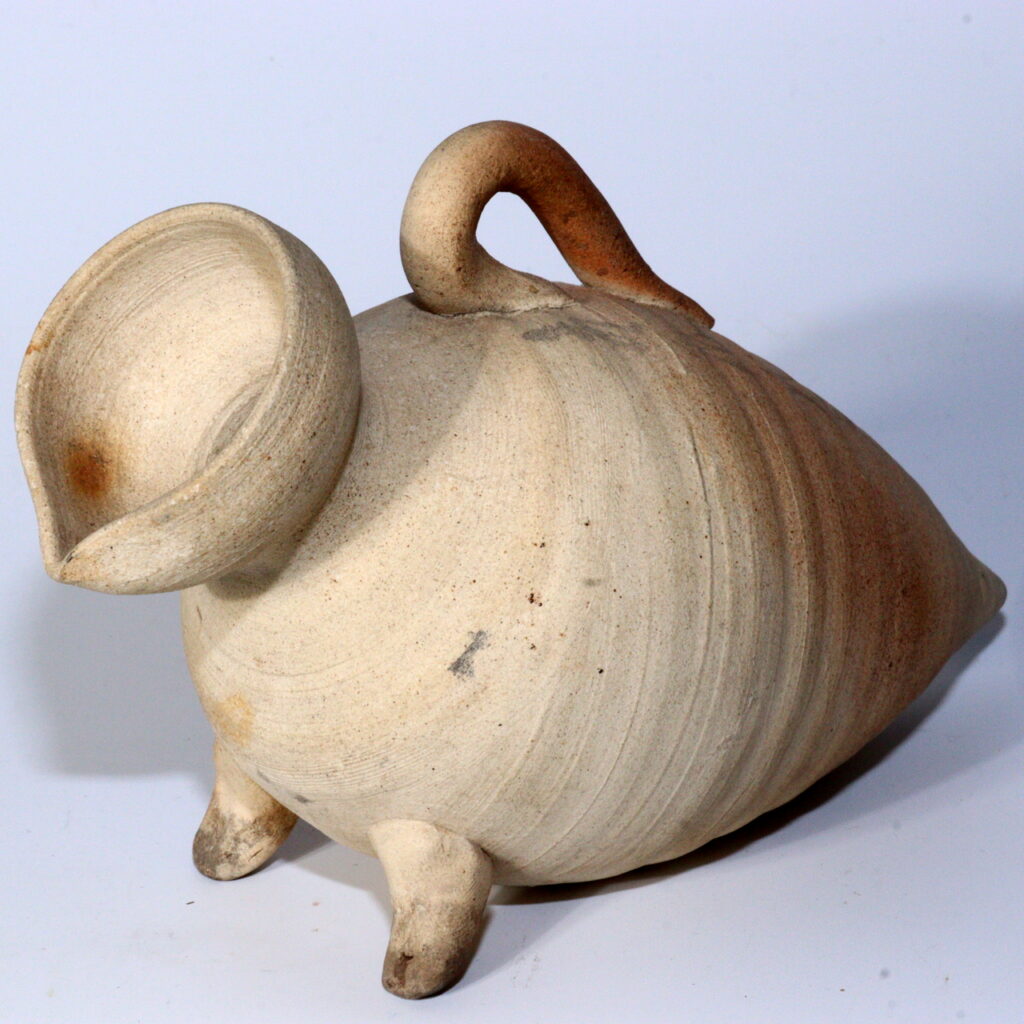
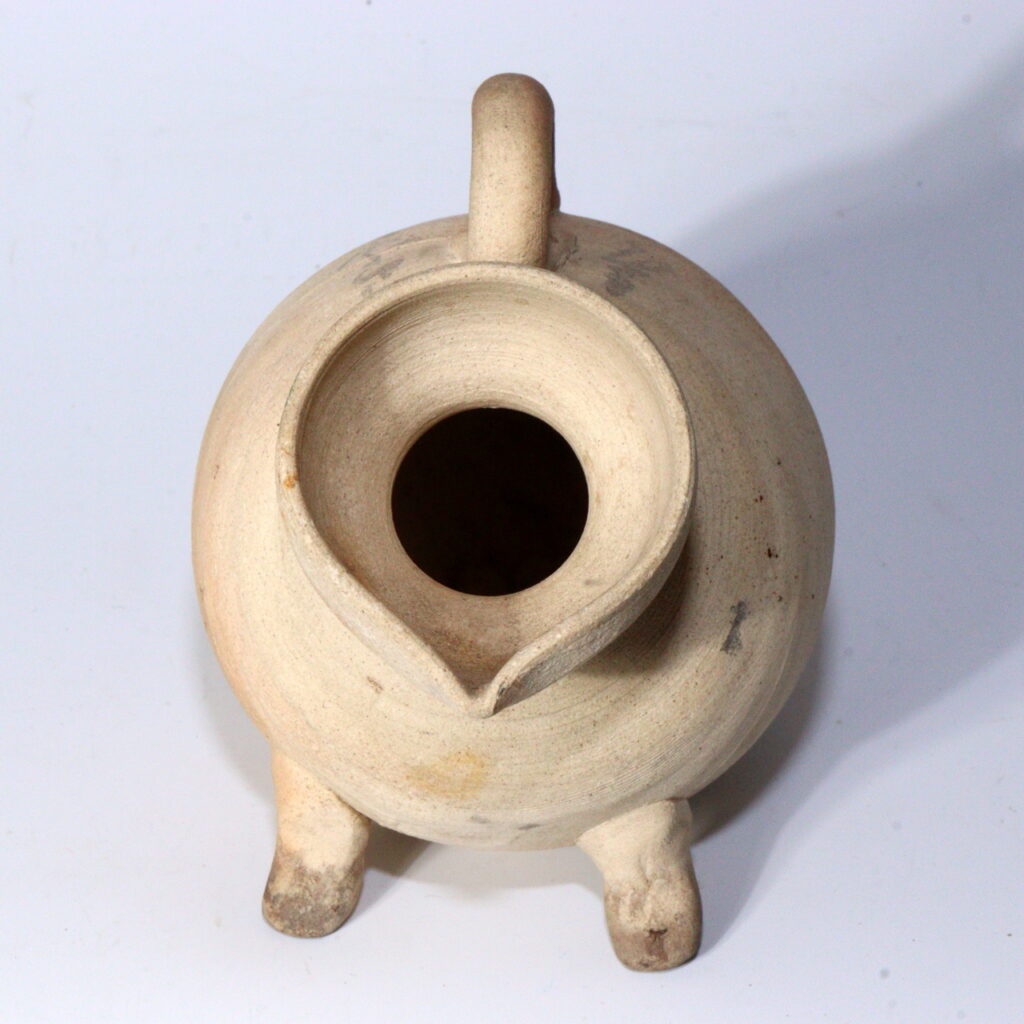
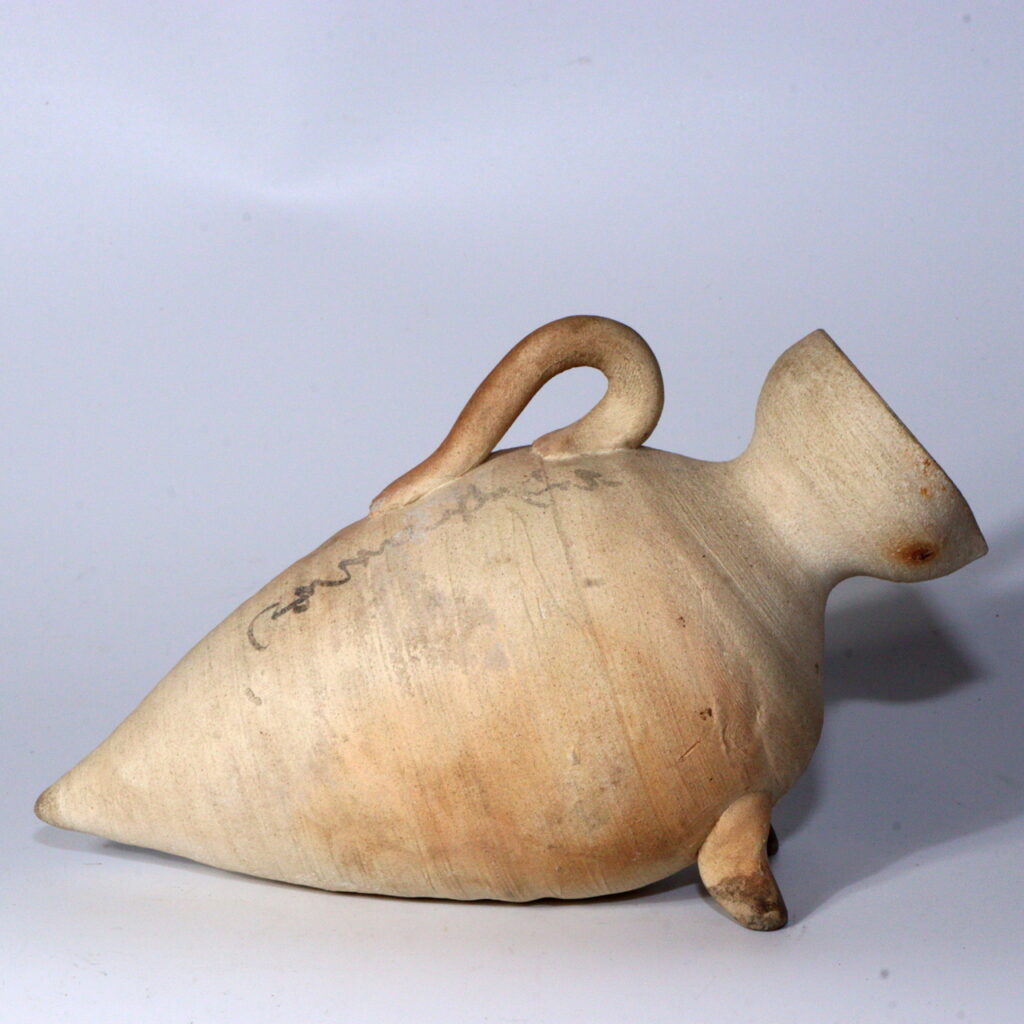
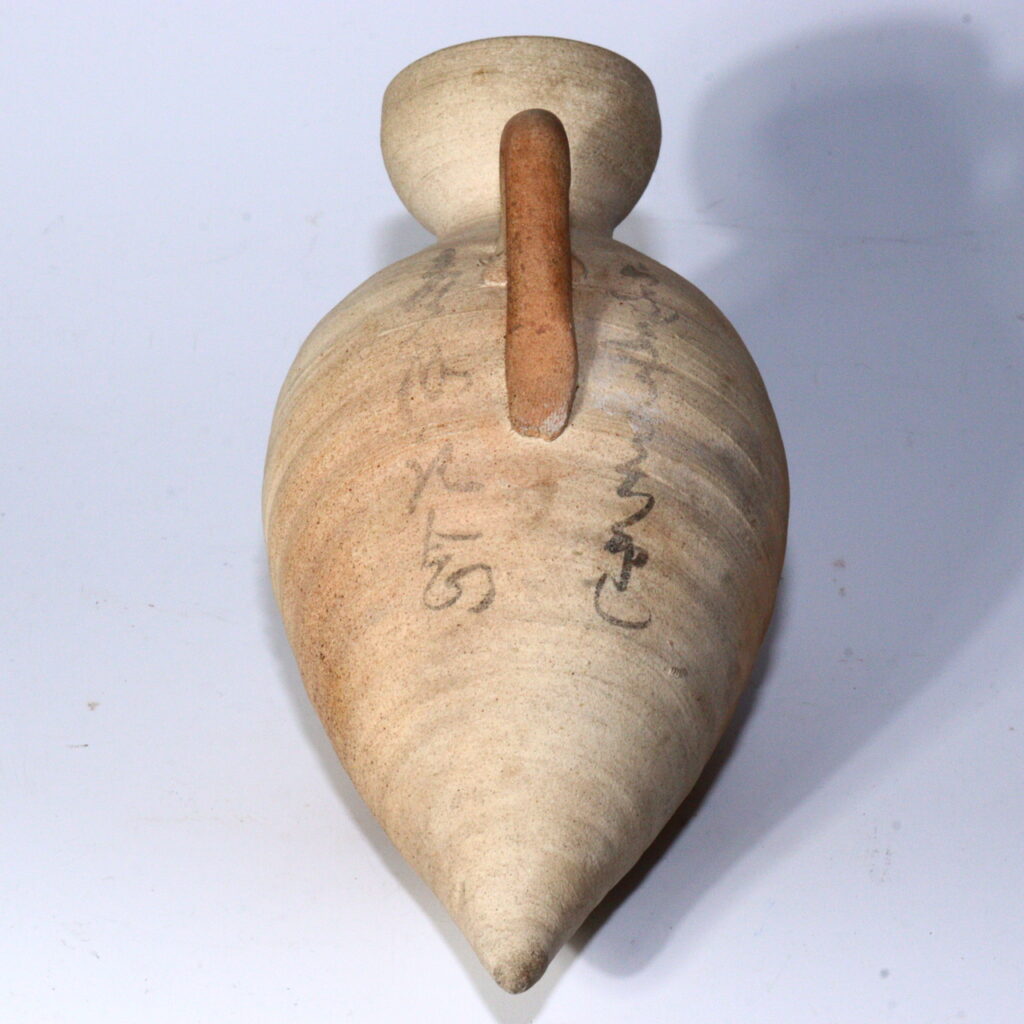
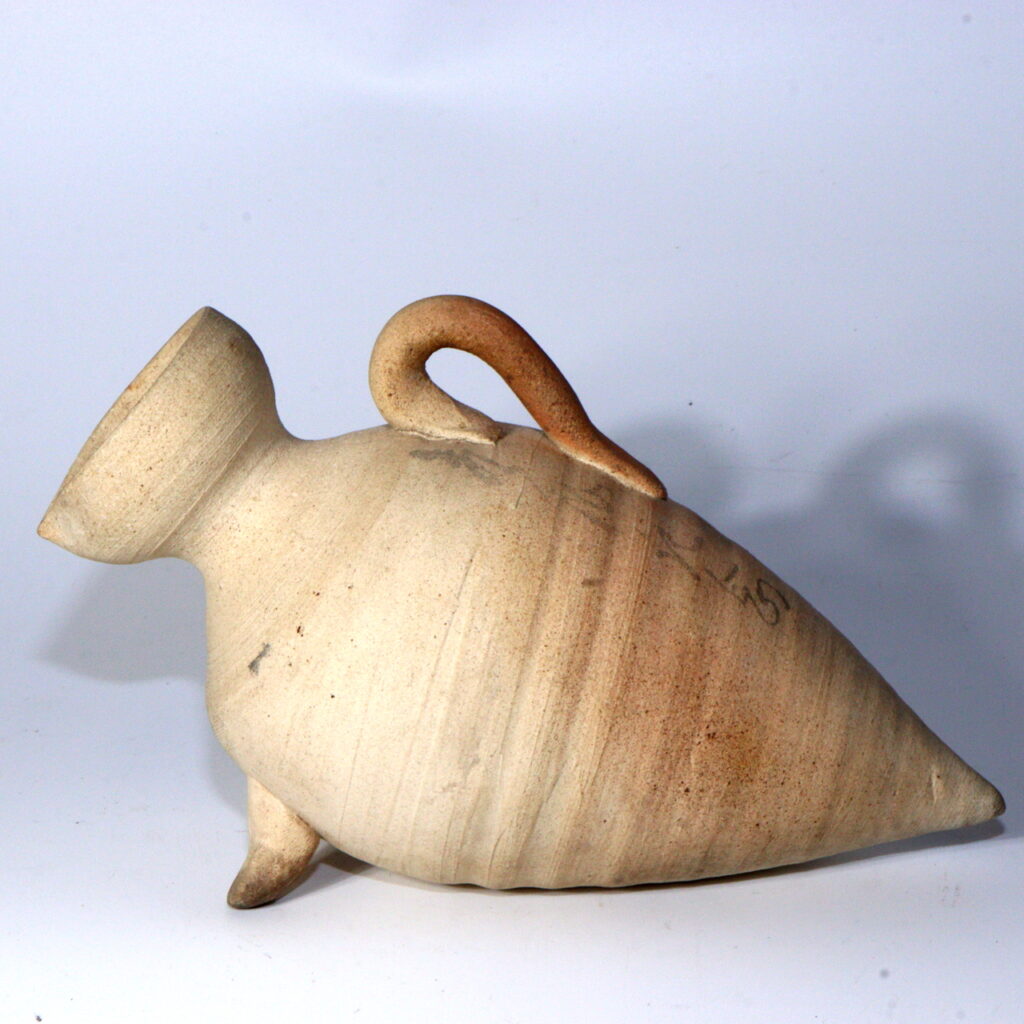
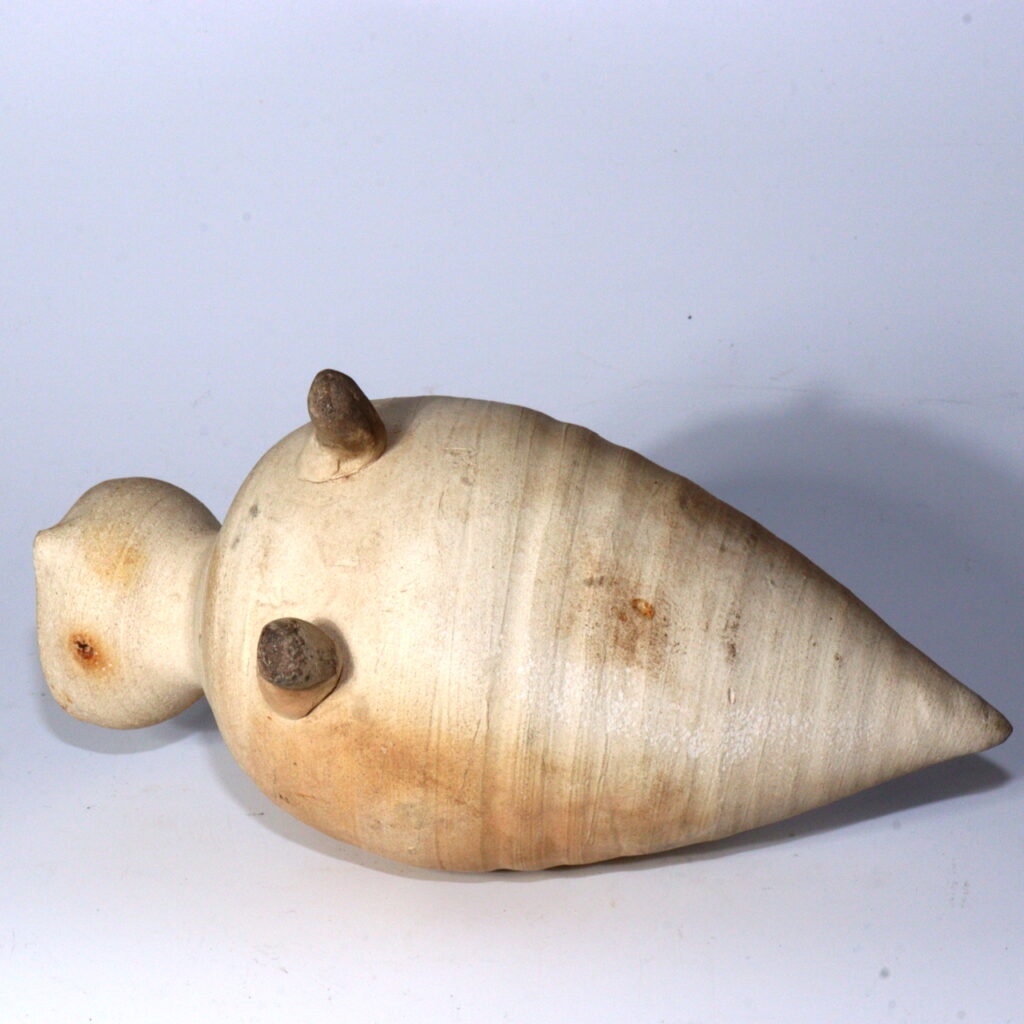
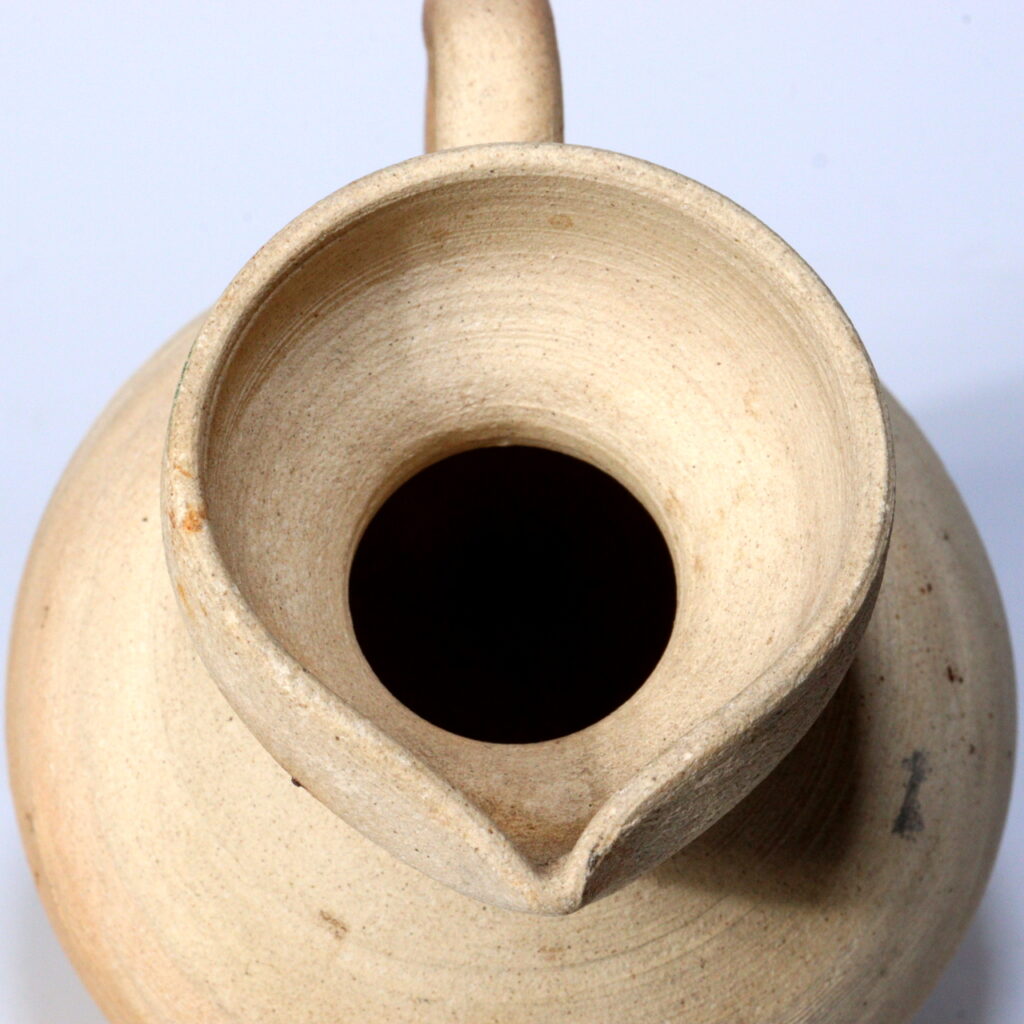
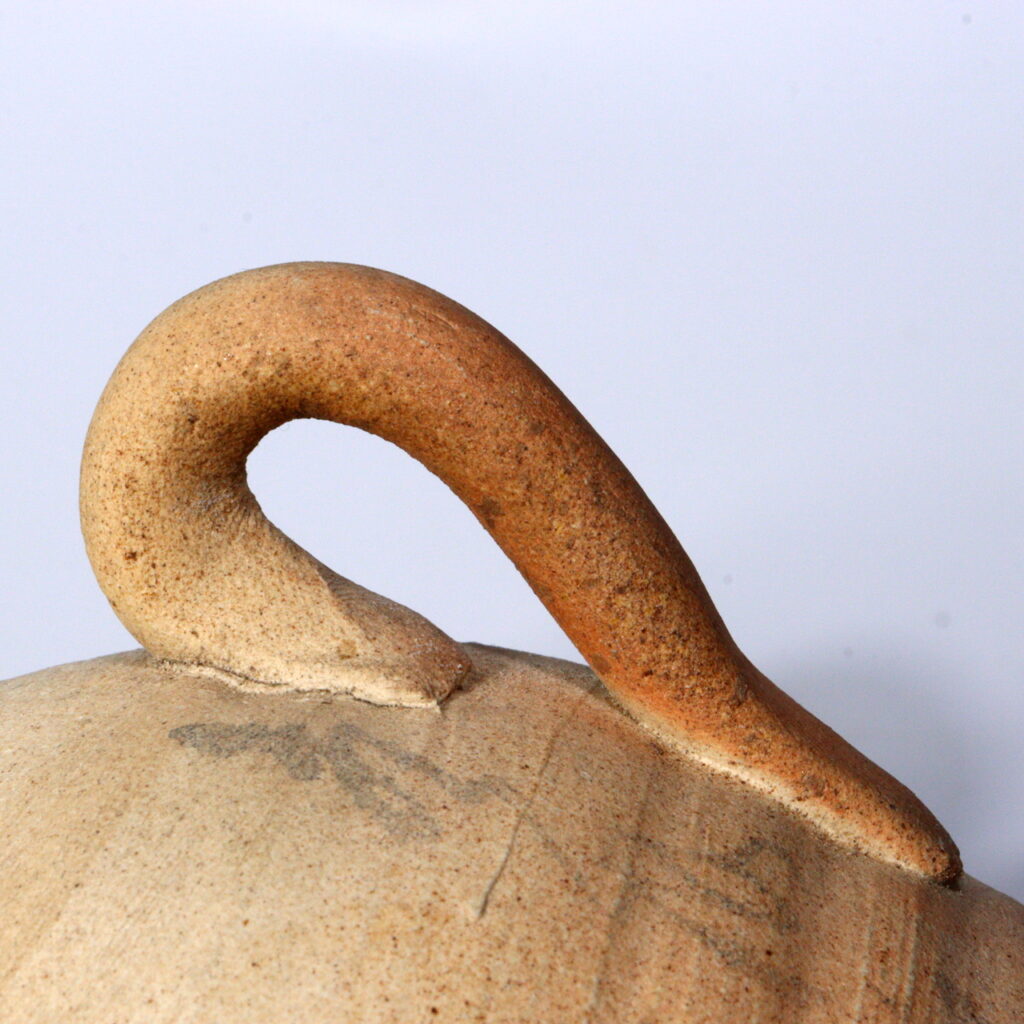
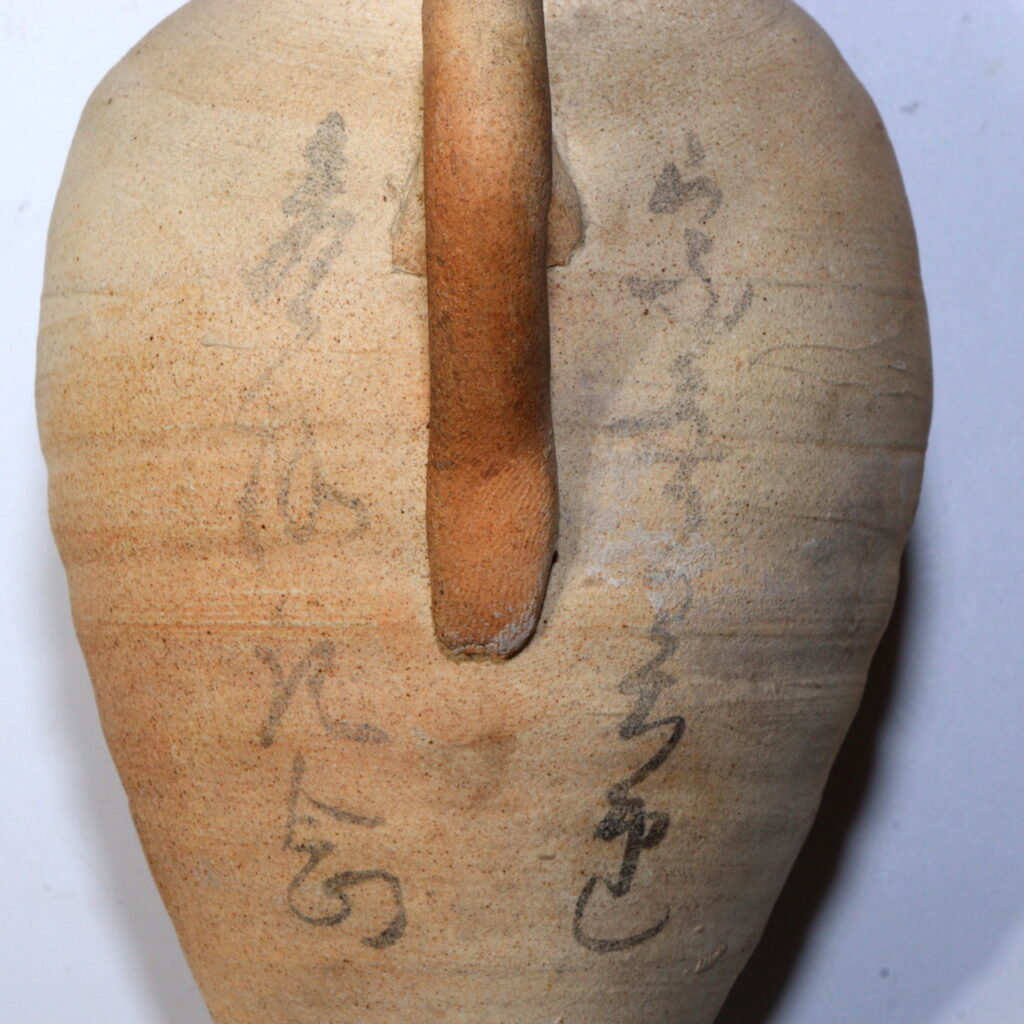
Antique Japanese Hato-Kan Sake Warmer – Late Edo Period Pigeon-Shaped Tokkuri
Introduction
Among the many fascinating forms of Japanese antiques, few are as charming and unique as the Hato-kan Tokkuri—a pigeon-shaped sake warmer dating back to the late Edo period. Combining playful design with practical function, this vessel reflects the ingenuity of traditional Japanese folk crafts and the rich culture surrounding sake.
The Story Behind This Item
The name Hato-kan (鳩燗) derives from its resemblance to a pigeon (hato in Japanese). Designed for warming sake, the tail end of the vessel was placed into the warm ashes of an irori (traditional Japanese hearth). This simple yet clever method allowed the sake to be gently heated, enhancing both flavor and aroma—an essential part of Edo-period hospitality.
Such folk items reveal much about daily life in pre-modern Japan. Unlike refined porcelain used for tea ceremonies, Hato Tokkuri were rooted in everyday culture, offering a glimpse into the convivial world of sake, seasonal gatherings, and rustic hearthside enjoyment.
The Charm and Highlights of This Piece
- Distinctive Pigeon Shape: The vessel’s whimsical form is both functional and symbolic, embodying good fortune and peace.
- Folk Craft Aesthetic: Crafted from unglazed ceramic with natural kiln variations, it has the rustic beauty associated with Japanese folk items.
- Functional Ingenuity: Its tail was designed to be inserted into hearth ashes for warming sake—a rare survival of Edo-era domestic ingenuity.
- Unique Inscription: This example bears a handwritten ink inscription, possibly a Chinese poem, a sake shop’s name, or the owner’s mark. Such writing is seldom found on surviving pieces, making it especially rare.
Value for International Collectors
For collectors abroad, this pigeon-shaped sake warmer is more than just a vessel—it is a window into the daily culture of the Edo period. Unlike Meiji export porcelain or ceremonial tea wares, folk ceramics such as this embody the everyday charm of Japanese craftsmanship.
It would be an excellent addition for collectors of sake ware, Japanese ceramics, folk antiques, or Edo-period cultural artifacts, highlighting both functional history and whimsical design.
Conclusion
This Antique Japanese Hato-Kan Tokkuri is a rare and delightful artifact from the late Edo period. Its playful pigeon form, functional design, and unique ink inscription make it a truly exceptional piece of Japanese folk heritage.
👉 View this item on Koedo Sun Art
If this piece is already sold, please explore our other curated collections here:
👉 Browse our collection of Japanese antiques